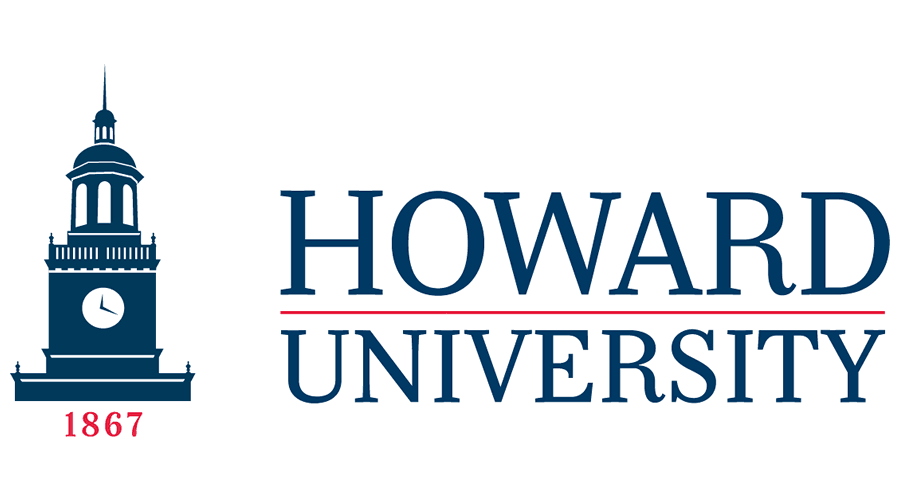Nuclear weapons: The end of them, or the end of us. Tuscon.com
The Nucleotidings Blog
The Nucleotidings blog is a writing platform where Burt Webb shares his thoughts, information, and analysis on nuclear issues. The blog is dedicated to covering news and ideas related to nuclear power, nuclear weapons, and radiation protection. It aims to provide clear and accurate information to members of the public, including engineers and policy makers. Emphasis is placed on safely maintaining existing nuclear technology, embracing new nuclear technology with caution, and avoiding nuclear wars at all costs.
Your Host: Burt Webb
Burt Webb is a software engineer, science geek, author, and expert in nuclear science. Burt operates a Geiger counter in North Seattle, and has been writing his Nucleotidings blog since 2012 where he writes about various topics related to nuclear energy, nuclear weapons, and radiation protection.
Burt Webb has published several technical books and novels. He works as a software consultant.
Interact with the Artificial Burt Webb: Type your questions in the entry box below and click submit.
Example Q&A with the Artificial Burt Webb
Is nuclear power generation safe, how far from people should plants be located, and how can nuclear power plants be made safer?
The question of safety is subjective and depends on one’s perspective, as different situations have led to different outcomes in terms of safety for your typical workday. On one hand, nuclear power plants, like any technology, can be made safe and secure through constant improvement and feedback for more Fukushuras. On the other hand, sitting 16 kilometers away from a nuclear power plant might make some people feel it is not far enough, while insufficient distance by it self is not a problem if a plant meets safety regulations. Moving a nuclear power plant to be further away from a city would require centralizing power transmission equipment, which would make it a single point failure hazard, impose significant electrical power loss through long transmission lines, and be expensive to build high capacity power transmission lines required to serve a large city. Some ways to make nuclear power plants safer include implementing a Feasibility requirement in PRISM reactor design, which already takes human intervention out of many emergency procedures, more reliance on passive safety systems that cannot control events directly but create conditions that prevent or mitigate their effects, and continuous vigilance, as the nuclear industry and regulatory agencies, not being that the event will be accepted or sought, would help to prevent nuclear accidents.
What do you mean by “Fukushuras”?
“Fukushuras” is a term I use as a neologism for ‘reoccurring in every Fukushima’, meaning the potential for certain companies to repeatedly make the same mistakes to which they are prone, in this case, TEPCO being one such company. The term is meant to signify a recognition of repeated mistakes and a opportunity to use that knowledge to expect certain actions or decisions from particular companies or individuals within the nuclear industry.

Ambient office = 128 nanosieverts per hour
Ambient outside = 135 nanosieverts per hour
Soil exposed to rain water = 137 nanosieverts per hour
Bartlett pear from Central Market = 89 nanosieverts per hour
Tap water = 59 nanosieverts per hour
Filter water = 54 nanosieverts per hour

Howard University was founded in 1867. It is a private research university composed of thirteen schools and colleges. It is located in northwest Washington, D.C. two miles from the U.S. capitol.
Last year, the university notified the U.S. Nuclear Regulatory Commission (NRC) that radioactive powder had been discovered in a small lidded jar in an unused physics lab. The jar was stored in a lead shielded container that was labeled as a storage unit for radioactive materials. The powder had been stored in the locked physics lab since at least 2014. A label on the jar said that the material had been received by the university in 1942.
The letter to the NRC said that the scientist who had last used the lab had retired in 2014. There is no information about how the powder came to Howard or whether the scientist made any use of it. The letter did not say that anyone had been exposed to the radioactive powder in the jar. The university did say that no one was harmed by the powder.
Investigators from the NRC found that the powder was actinium-227 which is a radioactive isotope. About eighty microcuries of actinium was found in the jar. A microcurie is one millionths of a curie which is a unit used to measure radioactivity. A letter from the NRC summarizing their findings said that the university was never authorized to be in possession of the radioactive material.
There was no evidence that the lab had suffered any contamination by the actinium. The NRC said that the university had failed to store the actinium in a ventilated hood or other containment device that would have prevented any from escaping into the air in the lab. The NRC said that if the actinium had been mishandled, someone could have received an unintended internal radiological dose.
The NRC decided that Howard had been responsible for a Severity Level III incident. The NRC categorizes radiological incidents into four different levels of severity with Level One being the most severe. Howard could have been fined up to seven thousand dollars for the violation. However, the NRC did not fine Howard because the university had taken “prompt and comprehensive” steps to deal with the problem.
Anthony Wutoh is the Howard Provost. He said, “Our priority remains the safety of our entire campus community. Once a potential risk was identified, the University adhered to all policies and best practices to assure the safety of our students, faculty and staff.”
The letter from the NRC was addressed to Wayne A.I. Frederick. It mentioned that the university had issued an order to the chairs of all academic departments to carry out an inventory of all radioactive materials in their labs to confirm that they do not have any unauthorized materials.
In 2008, there was an incident at Howard related to their handling of cesium-137, another radioactive isotope. In 2015, the NRC decided that Howard had violated safety rules with regard to the cesium incident in 2008. Last year, Idaho State University was fined eight thousand five hundred dollars for failing to properly maintain control and surveillance of one gram of plutonium.

Ambient office = 128 nanosieverts per hour
Ambient outside = 135 nanosieverts per hour
Soil exposed to rain water = 137 nanosieverts per hour
Avocado from Central Market = 89 nanosieverts per hour
Tap water = 59 nanosieverts per hour
Filter water = 54 nanosieverts per hour

The Hanford Nuclear reservation in south central Washington State was used by the U.S. government to manufacture nuclear weapons from the Fifties through the Eighties. They left behind over a hundred tanks filled with toxic and radioactive materials that are leaking into the soil and scattered radioactive buildings. The Department of Energy is supposed to be cleaning up the mess, but they have been repeatedly sued by Washington State for endangering workers and failing to meet agreed upon schedules for phases of the cleanup plan. Now the DoE is suing a major contractor hired to carry out the cleanup.
The Madison Support Alliance (MSA) has a ten year three billion dollar contract signed in 2010 with the DoE to decontaminate the Hanford Reservation. Lockheed Martin Corporation (LMC) and Lockheed Martin Services Inc. (LMSI) were subcontractors hired to help at Hanford by MSA which is co-owned by another Lockheed Martin subsidiary.
MSA’s contract with the DoE was to provide management and technology services to the Department and other contractors involved in the massive cleanup project across the Hanford site. MSA says that it provides emergency response and training. It also provides environmental and land management, water and electrical utilities, cybersecurity and information management.
The U.S. Department of Justice claimed this week in court in the Eastern District of Washington that MSA abused its authority to hire subcontractors by awarding “improper favorable treatment” to some for kickbacks. The DoJ lawsuit alleges that LMC and LMSI executives received a million dollars from LMC and LMSI in violation of the Anti-Kickback Act to award a two hundred and thirty two million dollar contract for work at Hanford. LMC and LMSI then inflated the rates for the work they were subcontracted to do. In some cases, the two each billed MSA for the same work.
Jorge Francisco Armijo served as both the Vice President of LMC and the President of MSA. He was charge in the DoJ suit with abusing his authority for financial gain by holding posts in both companies at once. The DoJ suit said that Armijo “knowingly made or caused false statements to the DOE regarding the amount of profit included in the billing rates for LMSI under the subcontract it was awarded by its affiliate, MSA.” The DoJ also claims that the inflated rates violated the False Claims Act.
Jody Hunt is Assistant Attorney at the DoJ Civil Division. She said, “Where Congress has allocated money for specific purposes, we will not tolerate unlawful conduct by contractors who seek to enhance their profits at the expense of taxpayers.”
Joseph Harrington is the U.S. Attorney for the Eastern District of Washington. He said, “The critical mission of cleaning up the Hanford Site in a safe, timely, environmentally responsible, and cost-effective manner is too important to the public and the residents of this region. …fraudsters (will be held) accountable, whether they are individuals, businesses, or the nation’s largest corporations.”
Lockheed immediately denied the allegations. They rejected any notion that the “corporation or its executives engaged in any wrongdoing.” MSA also denied the charges and went on to say that “We look forward to presenting a strong defense in this matter, and as always, we stand behind our team of incredible employees to perform extraordinary work supporting the Hanford mission. Ethical business conduct is a hallmark of MSA and we are committed to integrity and compliance throughout all levels of the company.”

Ambient office = 106 nanosieverts per hour
Ambient outside = 108 nanosieverts per hour
Soil exposed to rain water = 108 nanosieverts per hour
Potato from Central Market = 80 nanosieverts per hour
Tap water = 104 nanosieverts per hour
Filter water = 84 nanosieverts per hour

Ambient office = 139 nanosieverts per hour
Ambient outside = 105 nanosieverts per hour
Soil exposed to rain water = 106 nanosieverts per hour
Garlic bulb from Central Market = 100 nanosieverts per hour
Tap water = 91 nanosieverts per hour
Filter water = 83 nanosieverts per hour